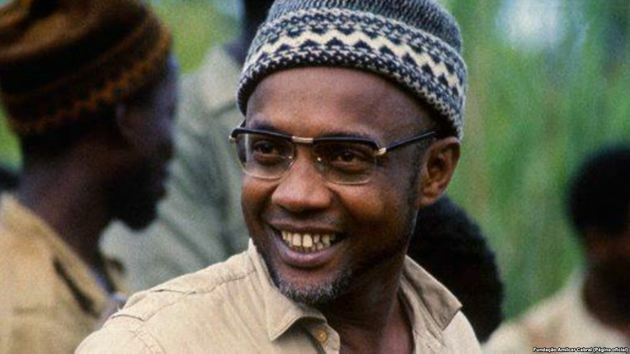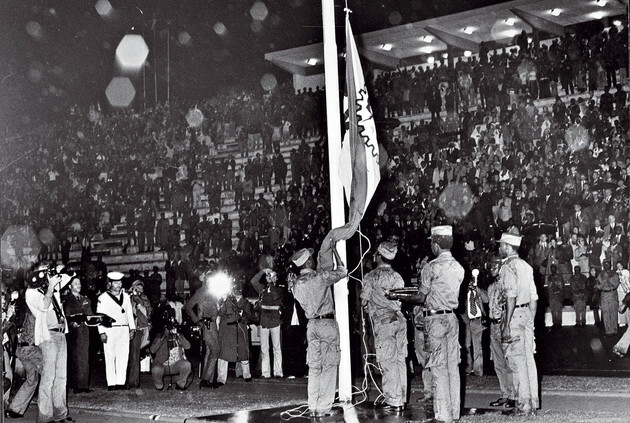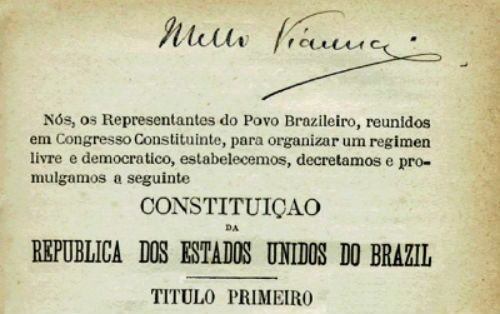Portugal was the last of the European countries to recognize the independence of its former former colonies in Africa: Angola, Guinea Bissau, Sao Tome and Principe, Mozambique and Cape Green.
The independence of the Portuguese overseas provinces took place after wars and the effects of the Carnation Revolution in 1974.
Summary
The independence of the former Portuguese colonies must be understood in the context of the post-World War II and Cold War world.
In 1945, with the foundation of the UN, society had changed its perception of colonization in face of the atrocities committed.

Thus, this body starts to campaign for the end of colonization by European countries. In this way, imperialist countries change the status of their territories.
The United Kingdom gathers part of its former colonies in commonwealth, while France, Holland and Portugal transform them into overseas provinces.
For their part, the independence movements in Africa were followed with interest by the United States and the Soviet Union, concerned with marking their influence on the periphery of the world. After all, the Cold War consisted of capturing countries for the capitalist-liberal or socialist ideology.
However, there were territories that did not fit into any of the alternatives offered by their metropolises and went to war to guarantee their autonomy. This was the case, for example, in Algeria, and in Congo.
Portugal
Portugal lived the dictatorship of Antônio de Oliveira Salazar (1889-1970) who was against any granting of autonomy to overseas territories. Thus begins a dispute between the UN and the Portuguese government, which will be pressured by England and the United States as well.
Salazar, however, prefers to resort to an armed solution and starts a bloody colonial war in Angola, Mozambique and Guinea-Bissau.
Faced with this situation, inspired by the Cape Verdean Almícar Cabral (1924-1973), the Portuguese-speaking territories in Africa united to face a common adversary.
Thus was founded the "African Revolutionary Front for the National Independence of Portuguese Colonies" in March 1960.
The organization was made up of popular movements from Angola, Cape Verde, Guinea-Bissau, Mozambique, and São Tomé and Príncipe
The following year, in Morocco, the group would meet again for the "Conference of Nationalist Organizations of the Portuguese Colonies" that would replace the previous organization.
This institution aimed to bring together the different leaders for the independence of the Portuguese African territories and coordinate strategies to obtain emancipation in a peaceful manner. Likewise, they wanted to draw the attention of international public opinion to the situation in Portuguese Africa.
The recognition, however, would only come when the government of President Marcello Caetano, Salazar's successor, was deposed by the Carnation Revolution.
The Portuguese provisional (or transitional) government, with General Antônio de Spínola (1910-1996) at the head, recognizes the emancipation of its former overseas possessions putting an end to the Portuguese Empire in Africa.
Angola

Faced with the mobilization of Angolans in favor of independence, the Portuguese government sent soldiers to the territory in 1961.
Two years later, an intense publicity began around the motto "Angola is ours". It was a campaign that included songs, images and reports by Portuguese residents exalting the harmony in which they lived.
The Angolan independent movement began in 1965, with the founding of the MPLA (Popular Movement for the Liberation of Angola). In 1961, under the command of Agostinho Neto (1922-1979), MPLA guerrillas began to fight against Portuguese forces.
After this conflict, other movements in favor of independence emerged, such as the FNLA (National Front for the Liberation of Angola) and UNITA (National Union for the Total Independence of Angola).
At the end of the Carnation Revolution, a transitional government was created to initiate Angola's independence process. This process, called "Alvor's Agreement", would mark independence for the end of 1975. In the transitional government were representatives of the MPLA, FNLA and UNITA.
The process, however, was interfered with by the United States, which supported the FNLA and Zaire to invade Angola from the North. Also with US support, South Africa, supported by UNITA, invaded the country from the south.
That year, in November, the MPLA took power in Luanda, with Agostinho Neto as president. The main consequence was an intense civil war and, with support from Cuba and the socialist bloc, the MPLA tried to guarantee resistance to the invasions.
This phase was called the second war of liberation and ended only in 1976. This year, the representations of South Africa and Zaire were expelled, as well as UNITA and FNLA defeated.
The presidency was assumed in 1979 by José Eduardo dos Santos (1942), who would remain in power until 2017.
In 1992, Angola lives free elections after agreements with the MPLA and UNITA.
Guinea-Bissau and Cape Verde

Guinea-Bissau's independence movement began with the founding of the PAIGC (African Party for the Independence of Guinea and Cape Verde) led by Amílcar Cabral (1924-1973).
With a Marxist orientation, he sought support from rulers such as Fidel Castro (1926-2016), but also from the Catholic Church having met with Pope Paul VI (1897-1978).
In 1961, the party started a war against the forces of Portugal. The result was the liberation of much of the territory in 1970. Three years later, Cabral was murdered by his own party comrades in Conakry (Guinea).
In 1974, the provisional government installed after the Carnation Revolution, Portugal recognized the independence of Guinea-Bissau and Cape Verde.
Guinea-Bissau experienced a great period of instability after independence, as the struggle divided the population, and one part supported the Portuguese and the other the liberation movements.
Cape Verde, on the other hand, did not suffer from the civil war after independence, and the resources of the new country could be channeled towards building the infrastructure of the new country.
Sao Tome and Principe

Due to the small dimensions of the territory of São Tomé and Príncipe, the country's independence was planned abroad, in Gabon.
There the revolutionary movement MLSTP (Movement for the Liberation of São Tomé and Príncipe) was created, led by Manoel Pinto da Costa (1937), which had affinities with the Marxist-Leninist doctrine.
In 1975, the independence of São Tomé and Príncipe was recognized and the government instituted a socialist-oriented regime. Relations with Portugal were maintained.
Manoel Pinto da Costa was the country's president from 1975-1991 and later re-elected in 2011.
Mozambique

The Mozambican independence movement was commanded by FRELIMO (Front for the Liberation of Mozambique), founded and led by Eduardo Mondlhane (1920-1969) in 1962.
Much of the Mozambican territory was conquered by FRELIMO. Mondlahane, however, was assassinated by the Portuguese in 1969 and, in his place, assumed Samora Machel (1933-1996).
The guerrilla performance imposed successive defeats on the Portuguese, who only recognized the colony's independence in November 1975. The presidency was exercised for the first time by Samora Machel.
Read more:
- Africa
- precolonial Africa
- Africa Sharing
- African countries
- Cold War
- Imperialism in Africa
- Antonio de Oliveira Salazar

